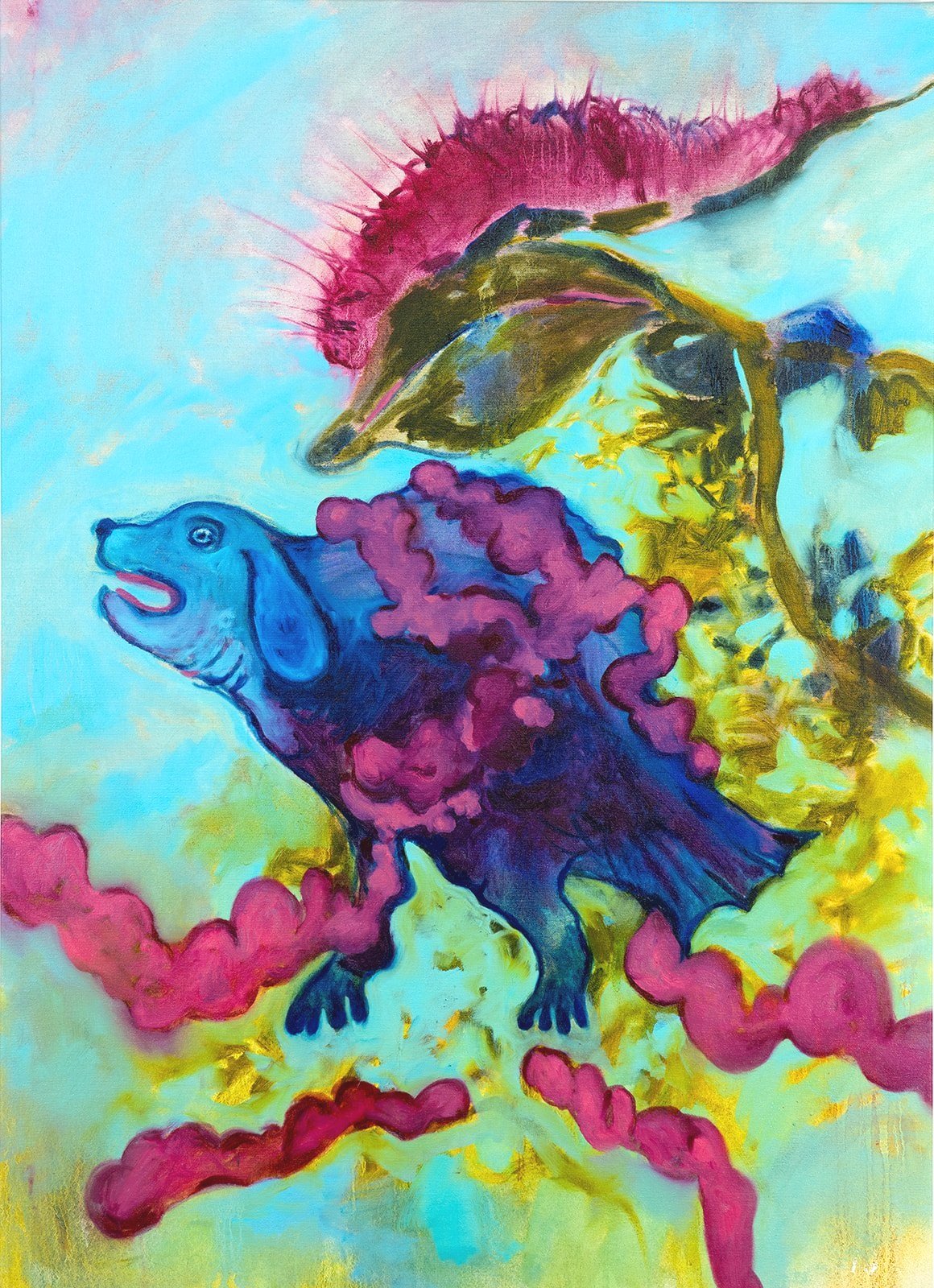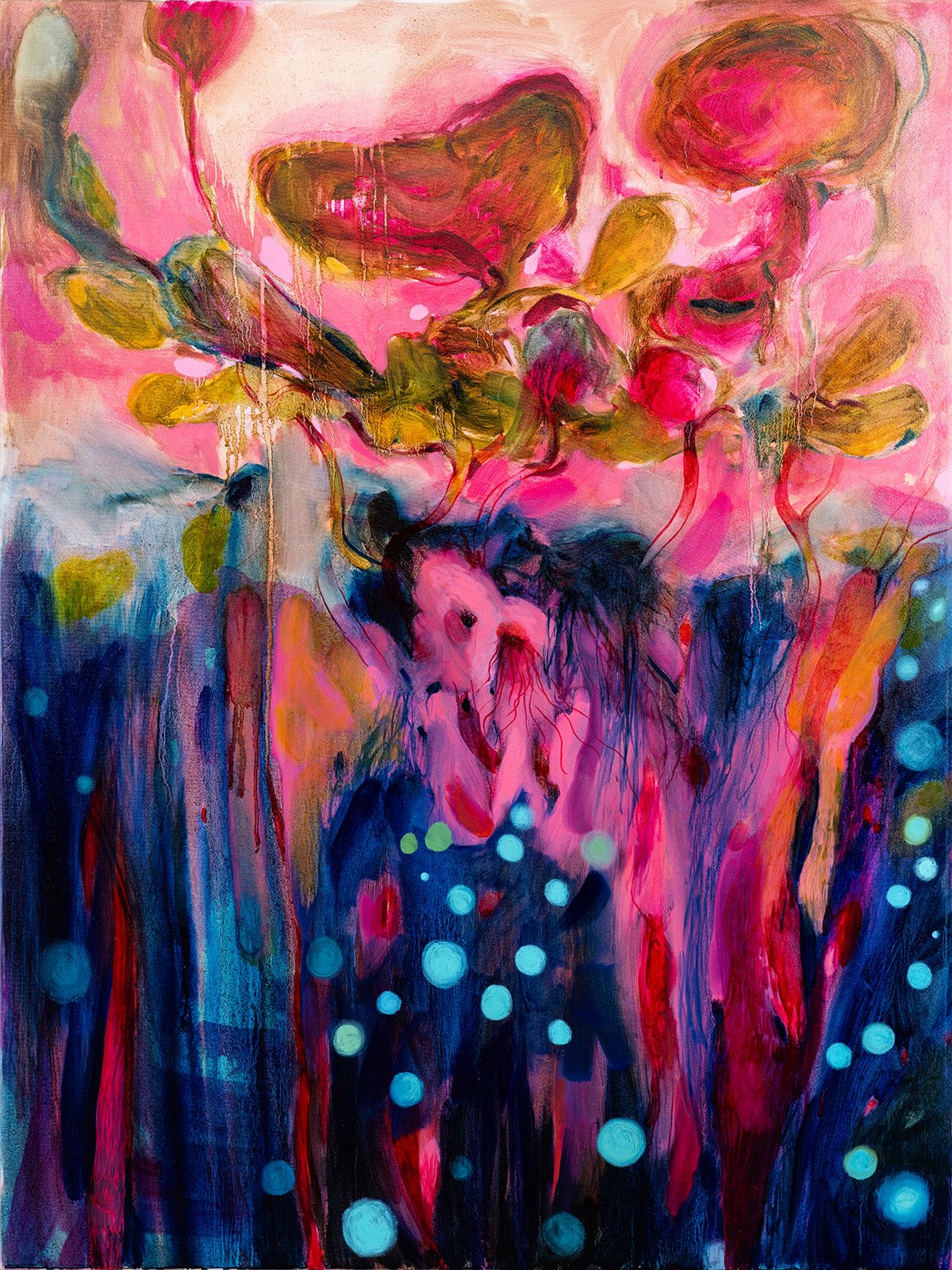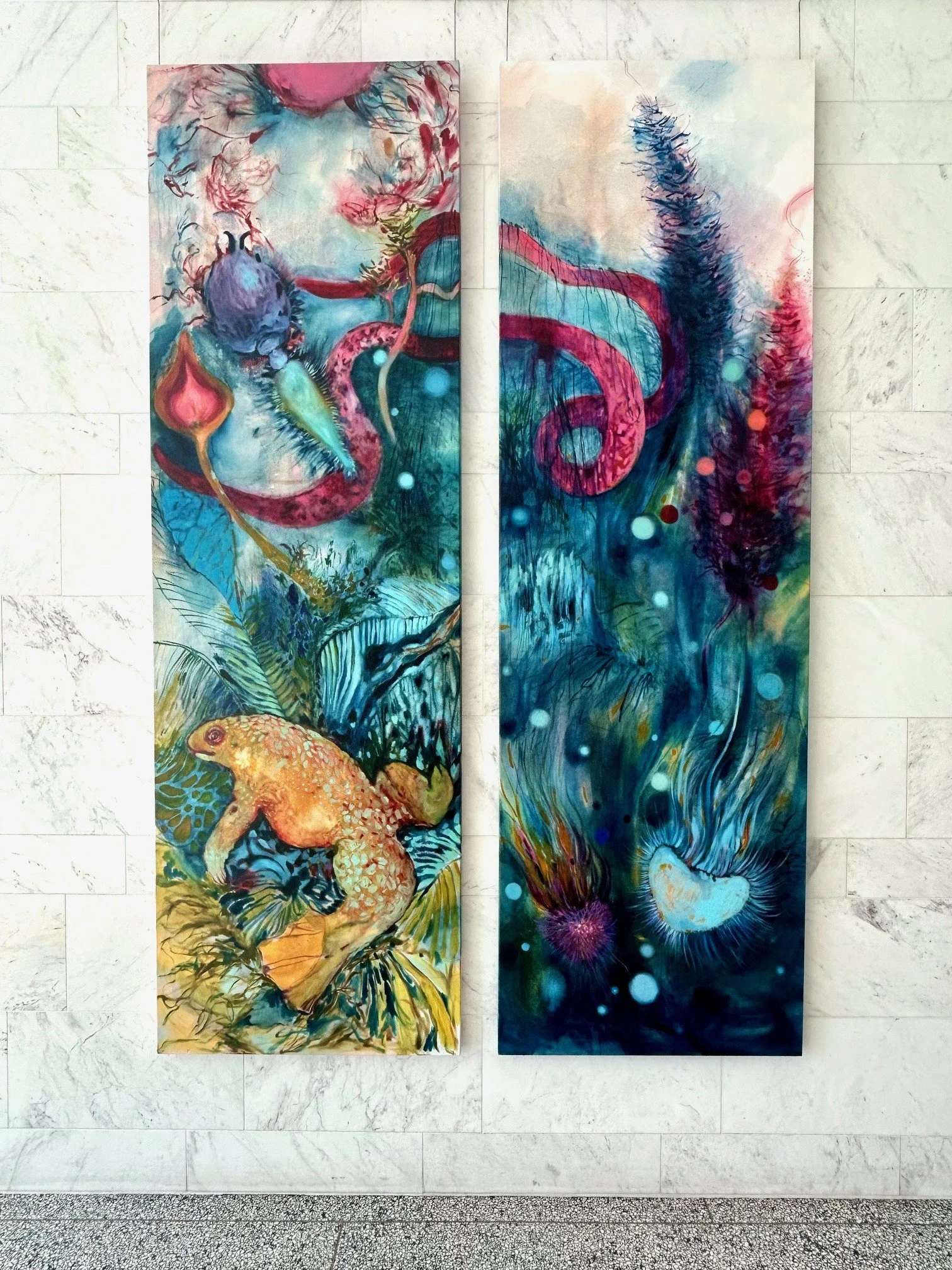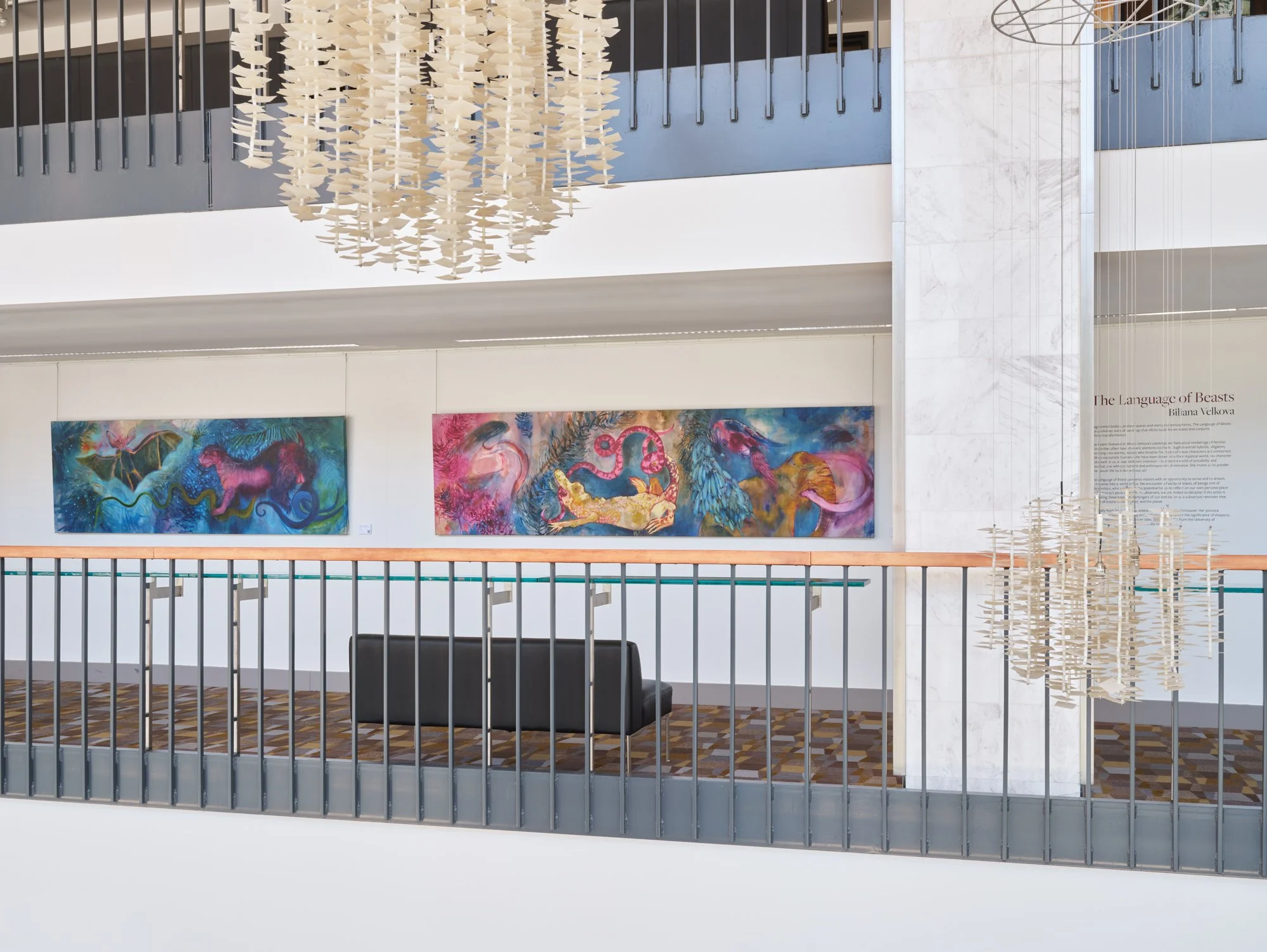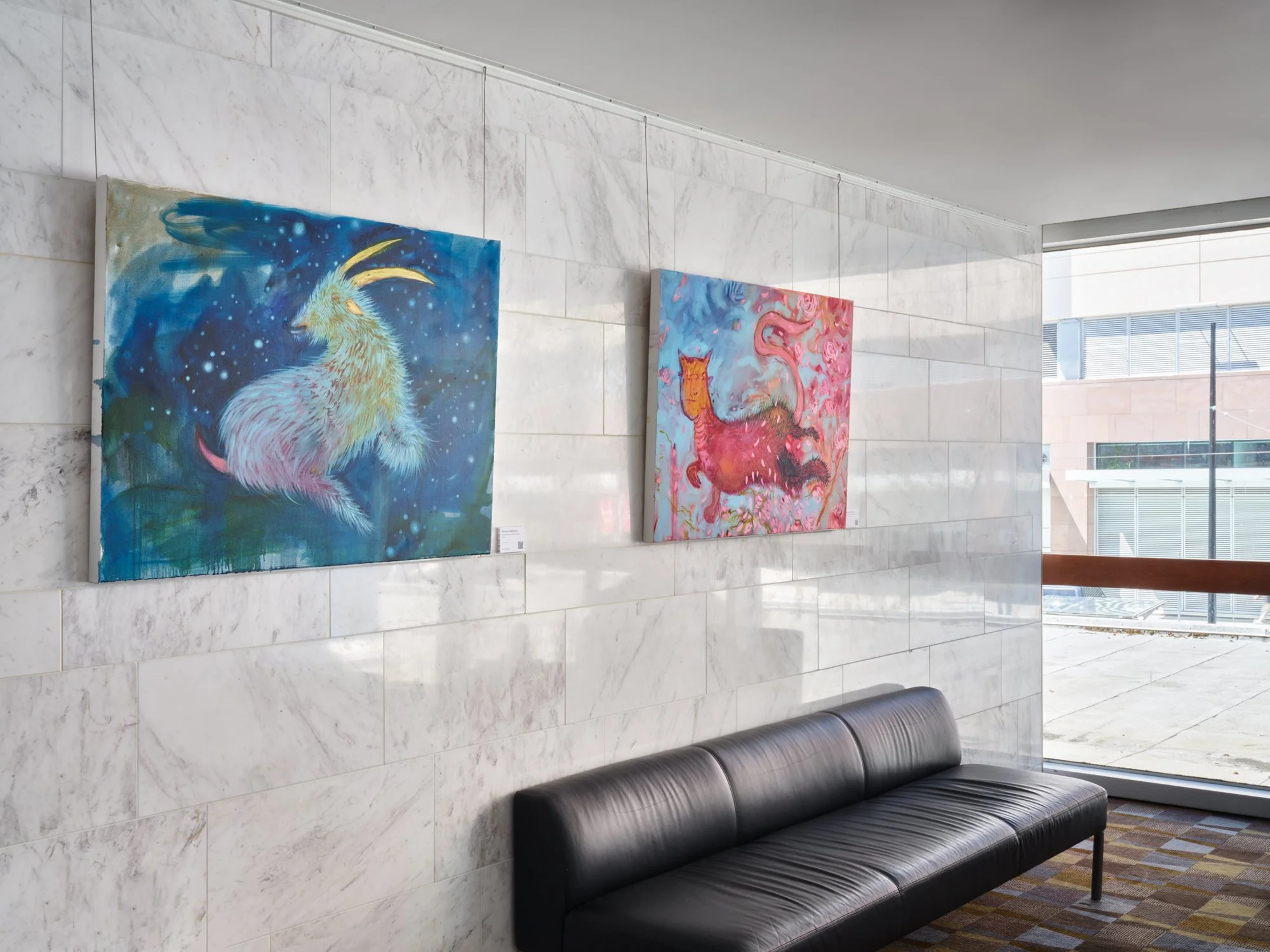Fragmented bodies, protean spaces and mercurial atmospheres, The Language of Beasts is a quicksilver suite of paintings that elicits lucid dreamstates and conjures infinite transformation.
The beasts featured in Biliana Velkova’s paintings are fantastical renderings of familiar animals that often have chimeric elements to them. Dogfish-entrail hybrids, alligators morphing into worms, wolves who breathe fire. None of these characters are concerned with us voyeuristic humans who have been drawn into their mystical world. No character looks back at us, as was the Velkova’s intention – to create a world of possibility and potential, one without humans and anthropocenic dominance. She invites us to ponder what would life look like without us?
Each painting presents a shimmering space where sea change is embedded and interconnected across plant and animal species as well as states of matter. There is an AI quality to these images, things are rendered well and in detail, put together in an order that appears to make sense, but also, there are elements and aspects that seem just a little bit off. We cannot tell where one beast ends and another begins, nor can we know if we are floating in liquid or flying across a sky. Are we looking at snow, bubbles, or flower petals? Velkova employs a range of painting techniques and composition tactics to sustain fluidity and ambiguity throughout this series using washes to create cloudy, dull and murky zones, contrasting these with sharp lush lines of foliage, or bright confetti like petals that explode forth out from dark backgrounds. We, as viewers are invited to decipher whether these worlds are collapsing or in regeneration… perhaps it is both.
In the case of these paintings, demarcations between states and animals may be soft, blurred, murky, and dark, but Velkova’s colour palette throughout the series is often the opposite, bold, punchy and celebratory. Pinks, oranges, yellows, turquoises and purples imbibe qualities of thriving resilience into the beasts and the foliage throughout the suite. The colours animate not only the animals, but also our visual senses.
It is intereting to note the research the artist undertook as she developed this series, Velkova explored 18th century Western systems and forms of classification of plants, animals and colours. Rigid and standardized these publications intended to demonstrate man’s dominion over nature. The language of classification is a language of othering, another tool useful for justifying an anthropocentric world view. In more ways than one, Velkova subverts these ideas. The show’s title The Language of Beasts suggests that these characters communicate across species and we are placed outside of their system of knowledge. They are interconnected, and it is humans who are othered, left outside. Velkova used a selection of the colour descriptions from Werner’s Nomenclature of Colours: Adapted to Zoology, Botany, Chemistry, Mineralogy, Anatomy, and the Arts to title each of the paintings in the suite. An exercise that demonstrates the futility of language, translation and interpretation. The painting titles describe a colour via referencing a part of anatomy of an animal that possesses that colour. Animals featured in the titles are not featured in the paintings. These titles are references to colours from the book, but also, the referenced colour appears in the painting. It’s an exercise in non-sense making that pokes fun at sense makers.
As Cecilia Alemani states in her Milk of Dreams Venice Biennale Statement, “The looming threat of environmental disaster reminds us every day that as mortal bodies, we are neither invincible nor self-sufficient, but rather part of a symbiotic web of interdependencies that bind us to each other, to other species, and to the planet as a whole.” Eco-anxiety and Ecological grief are now well-known sentiments and conditions as we continue onwards into the ever deepening anthropogenic climate crises. How do we embrace the grief and work with the anxiety to move towards action?
Velkova’s painting suite embodies Alemani’s observation on binding interdependencies. Though human presence isn’t evident in the imagery, as outside observers we are interconnected to these beasts and their world, and it is within this transformational shift of being outside looking in, as opposed to being the top of the pyramid, which provides new insight and perspective. The Language of Beasts presents visitors with an opportunity to sense and to dream, to immerse into a world in flux. We encounter a fluidity of states, of beings and of relationships, which opens up the potential for us to reflect on our own personal place and humanity’s place on earth. As observers, we are invited to decipher if the artist is presenting these beasts as harbingers of our demise, or as a subversive reminder that we are all bound to each other, and the planet.
Sunshine Frère


